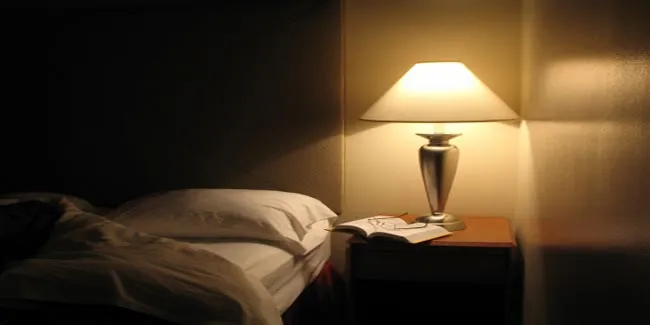
We live in an increasingly illuminated world. From the screens of our phones to the streetlights outside our homes, artificial light blankets our nights. While undeniably convenient and essential for safety, this constant glow, often referred to as "light pollution," is more than just an aesthetic inconvenience for stargazers. Increasing evidence indicates that widespread nighttime exposure to artificial light (ALAN) has a profound effect on our health and well-being.
Table of Content:-
What is Light Pollution?
In an exclusive interaction with the editorial team of Onlymyhealth, our expert, Dr Shrey Kumar Srivastav, Senior Consultant and General Physician, Sharda Hospital - Noida, explained that light pollution refers to the excessive or uncontrolled usage of artificial light. It appears in a variety of forms such as:
- Skyglow: The diffuse urban glow, resulting from light scattering within the atmosphere.
- Light Trespass: Light illuminating where it is not wanted or required (e.g., a streetlight shining through a bedroom window).
- Glare: Uncomfortable brightness that hinders vision or causes visual strain.
- Clutter: Overcrowding of bright, confusing, or distracting lighting.
Although the attractiveness of a glowing city may be entrancing, its biological consequences are being taken seriously by scientific research.
Circadian Rhythm: Our Internal Timekeeper Under Siege
At the centre of light pollution's possible health effects is our circadian rhythm. Circadian rhythm refers to our internal 24-hour clock, controlling thousands of physiological processes, from sleep-wake cycles and hormone secretion to metabolism and even mood. The most influential synchroniser of our rhythm is light, and that's bright light during the day and darkness at night.
Our eyes contain specialised light-detecting photoreceptors that transmit signals to the brain's suprachiasmatic nucleus (SCN), commonly referred to as the ‘master clock.’ At night, the SCN tells the pineal gland to release melatonin, a hormone essential for falling asleep and maintaining it.
The issue comes up when artificial light interferes with this natural signal. Exposure to ALAN, especially blue-enriched light from much LED lighting and electronic devices, has been shown to quash melatonin production. This fools our bodies into believing it is still daytime, upsetting our highly developed circadian rhythm.
Also Read: Non-Dairy Alternatives for Better Cardiovascular Health

Adverse Effects Of Light Pollution On Health
Our circadian rhythm and melatonin can be suppressed by, and our rhythms disrupted by, light pollution, which can cause a ripple effect that spreads throughout the body and may lead to a variety of health problems:
1. Sleep Disturbances
This is one of the most direct and well-documented effects. Insomnia, increased wakefulness, and decreased quality of sleep are frequent complaints. Chronic sleep loss is a well-established risk factor for many diseases.
2. Hormonal Imbalances
Melatonin is not only for sleep. It's an antioxidant with anti-inflammatory and immune-modulating effects. Long-term suppression of melatonin may have wider implications on our hormonal balance and cellular health.
3. Increased Risk of Some Cancers
Certain studies, albeit still in development, indicate an association between long-term night exposure to light and an elevated risk of some cancers, such as breast and prostate cancer. This is believed to be an effect of the oncostatic (tumour-suppressing) action of melatonin.
4. Metabolic Disorders
New evidence suggests a link between circadian disruption and a heightened risk of metabolic conditions such as obesity, insulin resistance, and type 2 diabetes. Our sleep-wake cycle is inextricably linked with our metabolism.
5. Cardiovascular Health
Research has suggested a possible link between exposure to ALAN and a raised risk of cardiovascular disease, including high blood pressure.

6. Mood Disorders
The complex interaction between sleep, hormones, and neurotransmitters results in an interference by disrupted circadian rhythms with mood, possibly affecting symptoms of depression and anxiety.
7. Impaired Immune Function
Proper sleep and a healthy circadian rhythm are essential to a healthy immune system. Ongoing disruption might weaken our body's defence against illness.
Bottomline
In the end, the purpose is not to do away with artificial light, but to utilise it prudently and in moderation. Once we recognise the deep relationship between light and our biology, we can make significant strides in safeguarding our well-being and reclaiming the healing potential of genuine darkness.
Also watch this video
How we keep this article up to date:
We work with experts and keep a close eye on the latest in health and wellness. Whenever there is a new research or helpful information, we update our articles with accurate and useful advice.
Current Version
